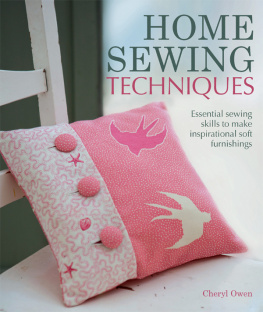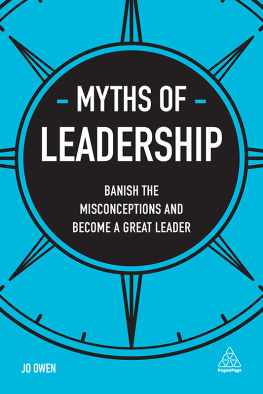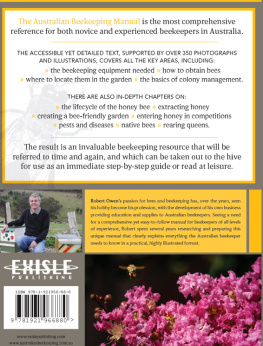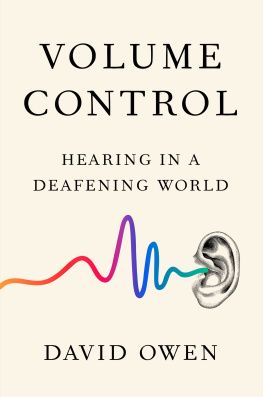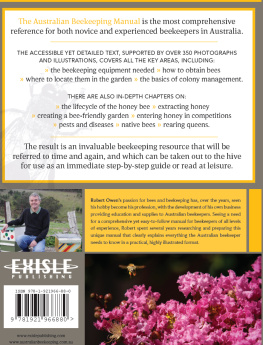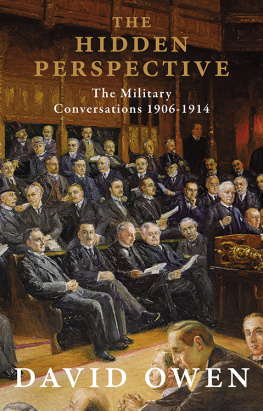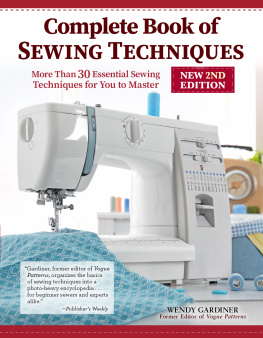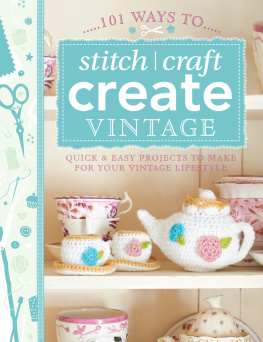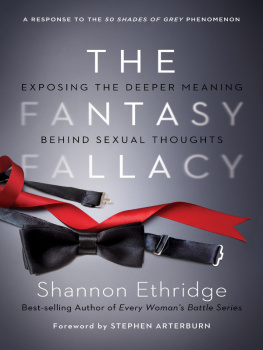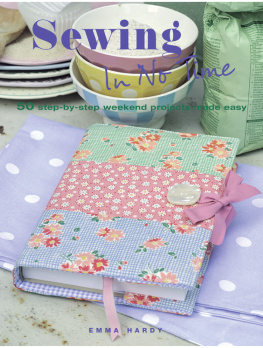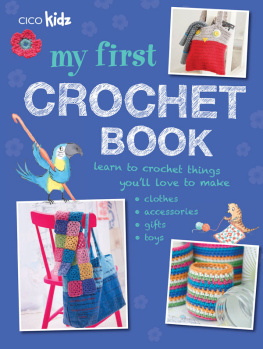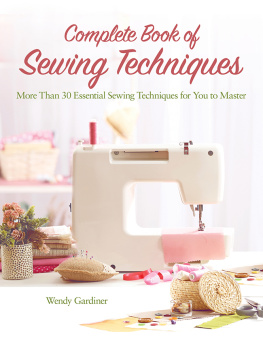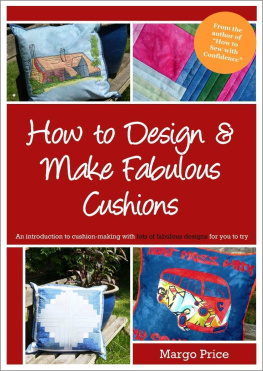Soft furnishings can completely change the look of your home, making it fashionable, comfortable and a joy to live in. You dont need to spend a lot of money or be an accomplished needleworker to attempt most home sewing projects. A few simple items such as a cushion or throw are quick and easy to make, and will give you the confidence to move on to more challenging projects. Making major features such as curtains can save you a serious amount of expense, as well as affording you the opportunity to custom make them to the exact size you need and in the fabric you want.
This book will guide reassuringly through all the techniques involved in home sewing, each explained in turn with one or more accompanying projects that demonstrate not only the featured method but some of the other key techniques. This means that you will soon become adept at applying the whole range of sewing skills to create fabulous fabric items with ease. Many of the projects would be lovely to make as gifts a handcrafted present is always extra special and shows you really care. Most of the items use small amounts of fabric, which means you can delve into that stash of enticing fabrics you may already have just waiting for the right home dcor idea. But otherwise, there is an amazing choice available to buy nowadays from stores and online. If you are already an enthusiastic needleworker, be bold and use these projects as inspiration to design your own innovative soft furnishing creations.
GETTING STARTED
It is important to check that you have all you need before you embark on your home sewing endeavours. There is nothing more frustrating to find that once you have started making something you are missing a vital piece of equipment or that you dont have enough fabric for a project, especially if you then discover that your chosen colourway or pattern is no longer available.
When it comes to basic sewing skills, there is more to home sewing than just stitching. Cutting out the fabric is a major part of the process too, and will often give you a sense of how the finished item will look.
Equipment
Even if you are a novice needleworker, you will probably have some basic sewing equipment. Gather these items together and store in one place, using this equipment only on fabrics and trimmings so they dont become dirty and blunt. Work on a clean, flat surface that is well lit daylight-simulation light bulbs are kind to the eye and wont distort the colour of fabrics and threads. Keep sharp implements out of the reach of young children or pets.
Pattern-making papers
Pattern paper is available from haberdashery (notions) stores; some large department stores will also sell sewing materials and tools. Tracing paper or greaseproof (wax) paper can also be used, and is especially useful when you need to see through the pattern, for example, when positioning motifs.
Pattern-making tools
Draw patterns with a fine pen or a propelling pencil. Draw straight lines against a ruler and describe small circles with a pair of compasses. Use a set square for accurate angles.

Pattern-making tools
Measuring tools
Use a plastic-coated or cloth tape measure to measure curves and to check fabric measurements. A transparent 30 cm (12 in) ruler is a handy size for making patterns and checking measurements. Draw against a metre (yard) stick for long lengths and to measure fabric quantities. A retractable steel measure can be used to measure windows and beds, and is also useful when measuring long lengths of fabric curtains for example. A 15 cm (6 in) long sewing gauge has a slider that can be set at different measurements for marking hems and seams, and as a guide for quilting.

Rulers and tape measures
Scissors
Cut paper patterns with paper scissors. Bent-handled dressmaking shears are the most accurate and comfortable to use for cutting fabric the angle of the lower blade allows the fabric to lie flat. Shears are available in different sizes, so test before buying find a pair that feels comfortable to your hand. The best-quality shears are expensive, but if cared for they will last a lifetime. A small, sharp pair of embroidery scissors are indispensable for snipping fabric and threads. For protection, keep them in a cloth case when not in use.
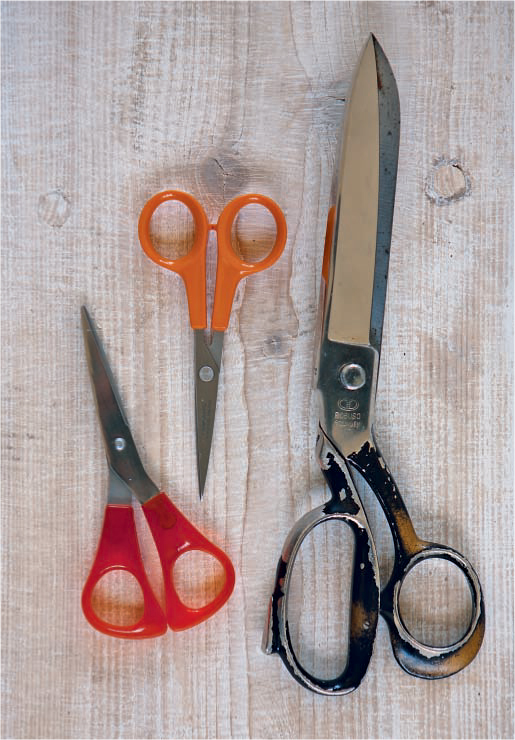
Scissors
Fabric markers
Marks made with an air-erasable pen will gradually fade away and those made with a water-soluble pen can be removed with water. Traditional tailors chalk comes in different colours in wedge and pencil form; the marks will mostly brush off but a slight residue will remain. Always test fabric makers on fabric scraps first. A fine, sharp pencil can be used on fabric, but the marks will stay.

Fabric makers
T IP: A good iron and ironing board are essential pieces of sewing equipement. Use a sturdy ironing board. Since you will often be handling large and weighty pieces of fabric, the board must be able to take the strain. Buy the best-quality iron you can afford, ideally a steam/dry iron that has a variable and reliable heat setting.
NEEDLES
Sewing machine needles
These needles come in a range of sizes with different-shaped points, the lower the number the finer the point. Universal needles in size 7090 (914) are the most commonly used. Stitch non-woven fabrics with a ball-point needle. Replace sewing machine needles regularly, as they soon become blunt and put strain on your sewing machine.

